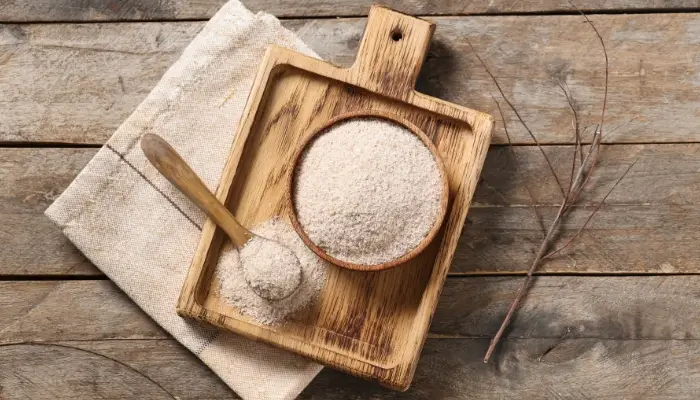The Ranapala plant is a lesser-known yet powerful herb that has long been used in traditional medicine and in folk healing practices across South Asia. Commonly referred to as the kidney stone plant, Ranapala is valued for its ability to naturally support kidney function and help dissolve kidney stones. In addition to its renal benefits, the plant boasts a range of medicinal uses, from liver detoxification to wound healing.
In this article, we’ll explore the benefits of the Ranapala plant, its traditional and modern uses, and detailed instructions on how to use Ranapala leaf (ranapala aaku) safely and effectively.
What Is the Ranapala Plant?
The Ranapala plant is a broad-leaved herbaceous plant typically found in tropical and subtropical climates, including India, Sri Lanka, and Southeast Asia. In Telugu, the leaf is known as Ranapala Aaku, and it’s often used in traditional herbal medicines preparations passed down through generations.
While the exact botanical name can vary depending on the region, Ranapala is widely identified with plants that possess diuretic, anti-inflammatory, and detoxifying properties. The leaves are most commonly used part of the plant and they can be used both fresh and dried.
Due to its kidney-cleansing effects, it’s sometimes nicknamed the “kidney stone plant” by herbalists and locals people.
Also Read: Parijat Leaves Benefits: Amazing Health Advantages You Didn’t Know
Ranapala Plant (Kidney Stone Plant) Benefits

Ranapala plant actually helps break kidney stones naturally. It reduces pain and makes stones pass more easily through urine. The plant actually works as a natural diuretic and increases urine flow. It helps clean the kidneys and removes toxins from the body.
The Ranapala plant is revered for its medicinal uses, especially for conditions related to the kidneys, liver, and urinary problems. Let’s look at the primary ranapala plant uses and benefits in detail.
1. Treats and Prevents Kidney Stones
One of the most famous benefits of the Ranapala plant is its remarkable ability to treat and prevent kidney stones, which has earned it the nickname “kidney stone plant.” This effect is primarily due to its diuretic properties, which help increase urine output, facilitating the flushing out of kidney stones from the body.
Over time, the plant’s compounds work to soften or even dissolve smaller stones, making their natural removal easier and less painful for the body to pass them naturally. Additionally, regular use of Ranapala may help prevent the formation of new stones, promoting overall urinary tract health.
For these reasons, many traditional healers recommend drinking Ranapala tea or juice to those experiencing kidney stones or urinary problems.
2. Natural Diuretic
Ranapala acts as a natural diuretic, encouraging increased urination which is essential for detoxifying the body and supporting healthy kidney function. By promoting urine flow, it helps flush out harmful toxins from the body.
This diuretic effect also plays a key role in reducing water retention or edema, helping to balance the body’s fluid levels and relieve swelling.
Additionally, Ranapala supports urinary health by helping to manage urinary tract infections (UTIs), making it a valuable herb for maintaining overall kidney and bladder wellness.
3. Supports Liver Health
Another well-known ranapala plant use is in liver cleansing. The leaf extract is believed to stimulate liver function, helping this vital organ perform its detoxification duties more efficiently.
In addition, Ranapala aids in the removal of harmful toxins from the body, supporting overall health and well-being. This cleansing effect makes it beneficial for those looking to improve liver health naturally.
Traditionally, the liver-supporting properties of Ranapala are often combined with other Ayurvedic herbs to help manage conditions like fatty liver and mild jaundice, always under proper medical supervision.
4. Anti-Inflammatory & Pain Relief
The ranapala leaf contains natural anti-inflammatory compounds that may help reduce swelling in joints, making it useful for conditions like arthritis and other inflammatory issues.
It can also ease pain caused by arthritis or injury, providing a natural alternative for managing discomfort without relying solely on medications.
Additionally, many people use a paste made from ranapala aaku applied directly to skin irritations and rashes for quick soothing and relief. It works the same way for soothing different skin problems.
5. Promotes Wound Healing
In traditional medicine, ranapala aaku is commonly applied directly to cuts and wounds to promote faster healing and prevent infection.
It is also used to soothe insect bites, reducing inflammation and discomfort naturally.
Additionally, the leaf’s antibacterial and healing properties make it an excellent natural alternative for treating minor burns and boils, helping skin recover without using harsh chemicals.
6. Improves Digestion
Traditional healers sometimes recommend Ranapala for common digestive complaints such as bloating, indigestion, and mild constipation.
The plant’s bitter compounds are believed to stimulate the production of digestive enzymes, helping the body break down food more efficiently.
By promoting regular bowel movements, Ranapala supports a healthy digestive system and overall gut wellness.
7. Boosts Immunity
While not as widely studied as some other herbs, the antioxidants in ranapala leaf are believed to protect cells from oxidative damage, which can contribute to aging and disease.
These antioxidants may also help enhance the body’s natural defense mechanisms, strengthening overall immunity.
Additionally, ranapala is thought to support the body’s ability to recover more quickly from sickness or stress, making healing quicker and stronger.
Also Read: Parijat Leaves Benefits: Amazing Health Advantages You Didn’t Know
How to Use Ranapala Leaf (Ranapala Aaku)
There are several traditional methods to prepare and use the ranapala plant depending on your various health purposes. Below are the most common, safe methods.
1. Ranapala Tea (for Kidney Stones & Detox)
Ingredients:
- 4–5 fresh ranapala leaves (or 1 tsp dried)
- 2 cups water are needed for this recipe.
Instructions:
- Wash the leaves properly with water to clean them thoroughly. This process removes dirt and impurities from the leaves.
- Boil the water and then add the leaves.
- Simmer the mixture for 10 minutes.
- Strain and let it cool slightly.
- Drink warm, once or twice a day.
Benefits:
This tea is primarily used as a kidney cleanser and helps with stone prevention and urinary issues.
2. Ranapala Leaf Juice
How to make:
- Crush fresh ranapala aaku in a mortar or blender. This will helps to extract the leaves juice properly.
- Strain the juice using a muslin cloth.
- Mix with a small amount of water if needed (optional).
- Consume 10–20 ml once a day under guidance.
Note: Juice is more potent compared tea. Use cautiously and only under the guidance of a health professional.
3. Ranapala Leaf Paste (for External Use)
Uses:
- Wound dressing
- Skin irritation
- Swelling or insect bites
How to make:
- Crush fresh leaves into a thick paste.
- Apply directly on the affected area.
- Cover with a clean cloth or bandage.
- Leave for a few hours or overnight.
4. Powdered Ranapala (Dried Leaf)
If fresh leaves are unavailable:
- Dry ranapala leaves in shade.
- Grind into fine powder.
- Store in an airtight container.
Usage:
Mix ½ to 1 teaspoon in warm water or honey, once daily. Can be taken for general detox, digestion, or kidney support.
Precautions and Side Effects
While the Ranapala plant offers a wide range of health benefits, it is essential to use it safely and avoid harmful effects. Like any herbal remedy, it may not be suitable for everyone, and proper precautions should be taken while using this.
Important precautions:
- Consult a doctor before using, especially for kidney conditions or chronic illness.
- Not recommended for pregnant or breastfeeding women.
- Avoid prolonged or high-dose use without doctor’s supervision.
- Stop usage if you notice any allergic reaction or side effects.
Summary of Ranapala Plant Benefits
| Benefit | How It Helps |
| Kidney Stone Relief | Breaks down and flushes stones |
| Urinary Tract Support | Promotes urination, prevents infections |
| Liver Health | Detoxifies and improves liver function |
| Anti-inflammatory | Reduces pain and swelling |
| Wound Healing | Speeds up recovery of skin issues |
| Digestive Aid | Improves digestion and relieves bloating |
| Immunity Boost | Fights oxidative stress |
Final Thoughts
The Ranapala plant contains many traditional healing properties. It has significant medicinal value. From its role as a kidney stone plant to its benefits for the liver, skin, and immune system, ranapala leaf (ranapala aaku) has earned its place in natural medicine cabinets. Whether you choose to drink this herb as a tea or apply its leaf paste on wounds, this humble herb offers many health advantages with minimal side effects if used properly.
Frequently Asked Questions (FAQs) about Ranapala plant
❓ Is Ranapala plant safe to consume daily?
In small doses (like tea or diluted juice), it’s generally considered safe. However, always consult a health professional first.
❓ Can children use Ranapala?
Only under strict herbal or medical guidance. Not recommended for infants or toddlers.
❓ Is Ranapala available in markets?
Yes, in some regions you can find it in Ayurvedic shops or herbal medicine stores. It’s also available online in dried or powdered form.
❓ Can Ranapala cure kidney stones completely?
It may help dissolve or flush out small stones and prevent new ones from forming, but it’s not a guaranteed cure. Always follow medical advice.
Note:
Businesstories.com provides information for educational purposes only and does not replace professional medical advice. Always consult a healthcare professional for personalized care and guidance.



